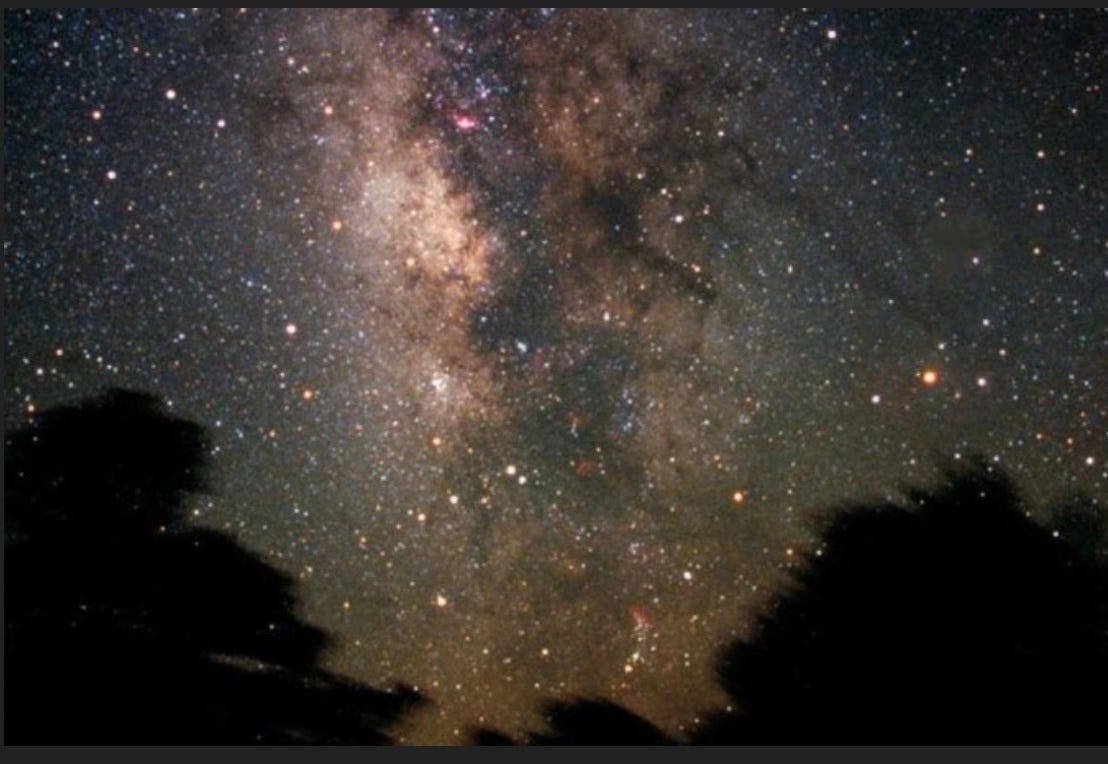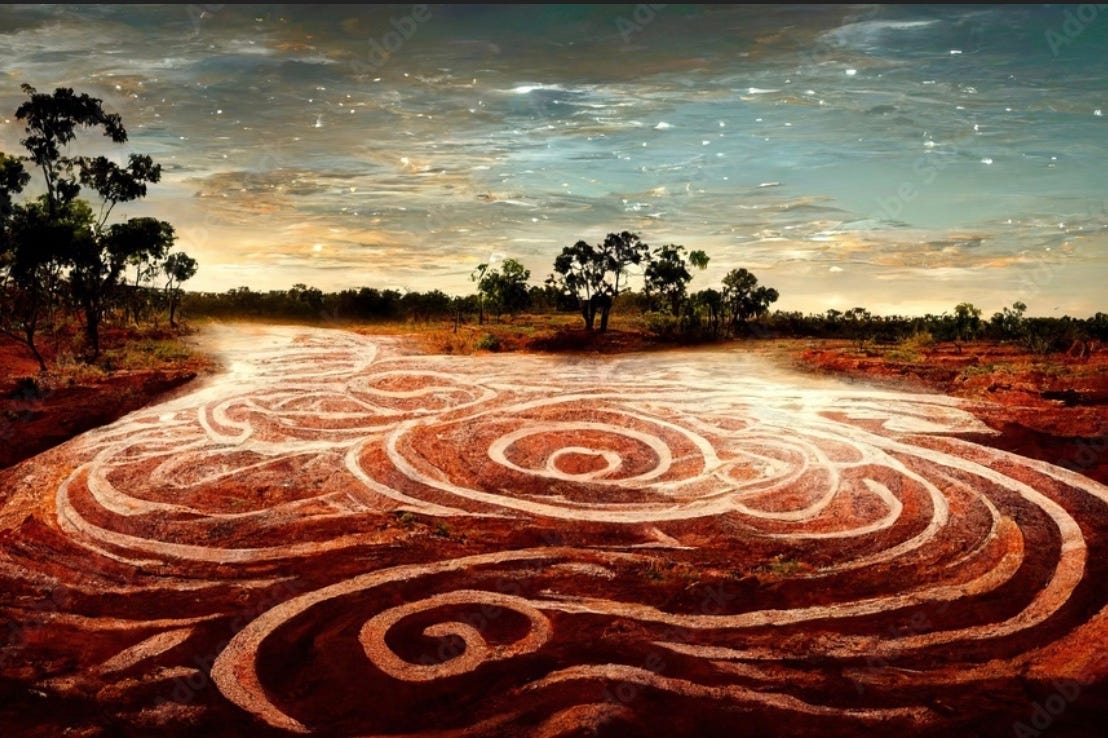I’m due to give a two-hour lecture and workshop on this topic next week as part of a Kirtan Retreat. This was only decided about a day ago, so please allow me to delve into the topic a little more deeply.
So, what is a ‘vibrational language’?
Consider the definition below:
A vibrational language is a form of communication where the sound, tone, and resonance of the words carry intrinsic meaning and impact beyond their literal or symbolic definitions. It is rooted in the idea that sound is energy, and certain vibrations can affect the body, mind, and spirit in profound ways. These languages are often considered sacred or ancient, designed not only for communication but also for alignment, healing, and spiritual connection.
A classic example of a vibrational language is Sanskrit. I’ve spoken before about the devotional practice of Kirtan, where something quite magical happens when people come together to sing. In this practice, people chant together, calling the name of the Lord or a variety of deities. Having engaged in Kirtan myself, there was a period when I had to do some soul-searching.
Because I am not Indian, I did not grow up in that culture, I don’t deeply resonate with it, nor do I have aspirations to convert to Hinduism anytime soon. Yet, the practice of Kirtan remains accessible to me. How is that possible?
Sanskrit is often described as a universal language, not bound by any one religion or culture but rather serving as a bridge to the sacred, the timeless, and the spiritual. Its sound frequencies and phonetic structure are believed to resonate with the very fabric of existence, aligning human consciousness with the cosmic rhythm. While Sanskrit is most commonly associated with Hinduism, it is not confined to any single tradition. Its mantras and chants have been adopted by various spiritual practices worldwide. For me, engaging with Sanskrit isn’t about adopting a particular religious identity but about connecting to a deeper, more universal vibration—one that transcends cultural boundaries. Sanskrit carries the resonance of something ancient.
And then, along comes the new book by Manchán Magan, Brehons and Brahmins: Resonances between Irish and Indian Cultures.
Sanskrit and Irish are both part of the Indo-European language family, meaning they share a common ancient root. This connection shows up in their similar grammar and vocabulary, as well as in their use of sounds that carry deep resonance. This linguistic connection suggests that Irish and Sanskrit, despite being from different parts of the world, share a deeper link in how they connect us to our surroundings and our spiritual lives.
For example, in both Irish and Sanskrit, the word for "cow" shows a striking similarity. In Irish, the word for cow is bó, while in Sanskrit, it’s go or gauḥ (गौः). This similarity highlights the shared linguistic roots of these languages. Cows have always been important symbols in both cultures. In Sanskrit, the name Govinda refers to Lord Krishna, who is often depicted as the protector of cows. Interestingly, in Irish, The Milky Way has been known as Bealach na Bó Finne, which means the Way of the White Cow, a poetic reference to the galaxy. This ties together the idea of cows as symbols of nourishment and their connection to the cosmos. This overlap of language and meaning deepens the sense of a shared cultural and spiritual heritage between the two traditions.
Magan also explores how the ancient legal and spiritual traditions of Ireland’s Brehons and India’s Brahmins share similarities in their wisdom and oral traditions. He argues that these connections are more than coincidental—they reflect a shared understanding of life, law, and spirituality across cultures.
But in Ireland, we had a slightly different aspiration. While Sanskrit aims to resonate with "cosmic energy," the Irish language is said to resonate more with the natural and emotional landscape. And that is a beautiful idea to me. That provides a foundation for exploring Irish song and poetry, which tie the language directly to the land and the heart.
This leads me to another connection—the concept of Australian Aboriginal Songlines. Both the Songlines and the Irish language share a unique relationship with the land, where the landscape itself is seen as a living map, woven with stories and meaning. Aboriginal Songlines are musical pathways that describe and connect key places in the natural world, passed down through generations to navigate and understand the land. Similarly, the Irish language is deeply connected to the landscape, with many place names and words evoking the shape, spirit, and history of the land. In both traditions, language and song are not just ways of communicating, but are intrinsic to how people experience and interact with their environment.
There’s something deeply universal about sound. Long before humans wrote words on paper or carved symbols into stone, we used our voices to communicate—to express awe, sorrow, joy, and devotion. These vocalizations, these vibrations, carry something profound: an energy that transcends meaning and connects us at a deeper level.
I’ve been exploring this idea lately, especially as it relates to devotional music and sacred languages. Vibrational languages—those with sounds carefully crafted to resonate with the body and spirit—offer a fascinating lens through which to view the world’s rich traditions of chant, song, and prayer. What connects these traditions is their shared understanding that sound is transformative. It shifts our energy, tunes our awareness, and reminds us that we are part of something greater.
In our noisy, modern world, it’s easy to forget the power of listening. Not just hearing, but truly listening—with our bodies, with our hearts, with the parts of us that know vibration is more than sound. When we allow ourselves to be moved by chant, by song, or by the soft rhythms of an ancient language, we open ourselves to connection: to the land, to the divine, and to each other.
Magan’s call to “listen to the land speak” feels like a call to all of us—to attune to the languages of vibration, whether they come from the Irish hills or a Sanskrit mantra.
Next time you go for a walk, listen to the sounds of nature as you would to a beautiful piece of music.
Let it wash over you.
Let it remind you: sound, at its heart, is vibration. And vibration, at its core, is connection.



